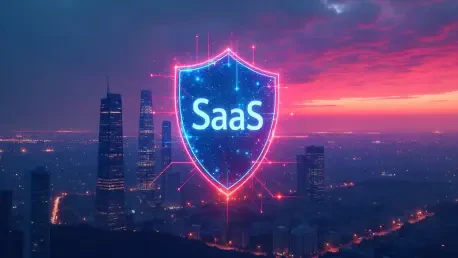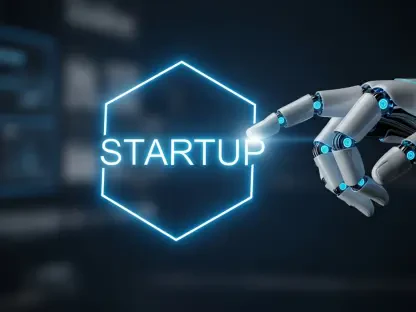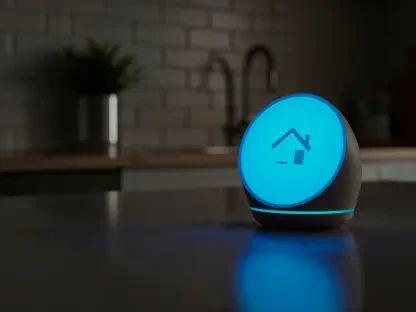In the ever-evolving landscape of digital security, a staggering breach reported in early October this year has sent shockwaves through the SaaS community, with a group known as Scattered LAPSUS$ Hunters claiming to have stolen approximately one billion customer records from numerous organizations using Salesforce environments. This incident underscores a chilling reality: cyber attackers are no longer solely targeting the fortified walls of cloud platforms but are zeroing in on individual tenants, exploiting human vulnerabilities and procedural gaps. The scale of this potential data theft serves as a wake-up call for businesses relying on Software-as-a-Service solutions to reassess their security postures.
The purpose of this guide is to equip SaaS users and organizational leaders with critical knowledge about these emerging tenant-level threats and to provide a comprehensive, actionable framework to protect their environments. By delving into the specifics of recent attacks and outlining practical steps, this resource aims to empower companies to fortify their defenses against sophisticated cyber threats. With attackers shifting focus to the human element, understanding and mitigating these risks is paramount for safeguarding sensitive data and maintaining business continuity.
This how-to guide will help readers achieve a robust security posture for their SaaS tenants by offering a detailed roadmap to counter the rising tide of cyber attacks. From implementing stringent access controls to fostering a culture of security awareness, each step is designed to address specific vulnerabilities exploited in incidents like the one involving Salesforce tenants. By following these strategies, organizations can significantly reduce their exposure to data theft and extortion, ensuring their SaaS environments remain secure in an increasingly hostile digital landscape.
Unveiling the Threat: A New Era of Tenant-Level SaaS Attacks
The digital realm was rocked this October when Scattered LAPSUS$ Hunters, a cybercriminal collective with ties to notorious groups like Lapsus$ and ShinyHunters, announced a massive data heist targeting Salesforce tenants. Their claim of extracting one billion customer records from various organizations worldwide highlights the audacity and sophistication of modern cyber threats. While Salesforce has maintained that its core platform remains uncompromised, the focus of this attack on individual tenants marks a significant shift in adversarial tactics.
This breach’s magnitude cannot be overstated, as it potentially affects a vast array of personal and business data across dozens of companies. Unlike traditional attacks aimed at breaching central systems, this incident reveals how attackers now exploit the unique configurations and user interactions within tenant environments. The reliance on voice-phishing, or vishing, to deceive IT staff into installing malicious tools for credential theft and data exports exemplifies the cunning methods used to bypass even the most robust platform defenses.
Consequently, this guide seeks to illuminate the nature of these tenant-level threats and arm SaaS stakeholders with the tools to protect their operations. By exploring the mechanisms behind such attacks and providing a clear path to enhanced security, the objective is to prevent similar incidents from disrupting businesses. Staying ahead of these evolving dangers requires not just awareness but immediate, strategic action to secure every layer of a SaaS ecosystem.
The Evolution of Cyber Threats: Why Tenant Security Now Takes Center Stage
Over recent years, cyber attack strategies have undergone a dramatic transformation, moving from direct assaults on SaaS platforms to more insidious methods that exploit trusted connections, applications, and user permissions. Historically, attackers focused on penetrating the core infrastructure of cloud services, but as providers bolstered their defenses, criminals adapted by targeting the less fortified perimeters of individual tenants. This pivot reflects a deeper understanding of where vulnerabilities truly lie in interconnected digital environments.
The Salesforce incident this year provides a stark example of this evolution, with attackers employing vishing techniques to manipulate IT support staff into installing tampered administrative tools. These tools, once embedded, facilitated credential harvesting and initiated bulk data exports, exposing sensitive customer information. Such tactics reveal a calculated exploitation of human trust and procedural weaknesses rather than technical flaws in the platform itself, underscoring the need for a redefined security focus.
Tenant-level security has thus emerged as a critical priority, especially as SaaS platforms continue to integrate deeply into business operations. With attackers zeroing in on the human element—often the weakest link—organizations must prioritize safeguarding user interactions and permissions. This shift in threat landscape demands a proactive approach to protect against breaches that can lead to significant financial and reputational damage, making tenant security an indispensable component of modern cybersecurity strategies.
Fortifying Your Defenses: Critical Steps to Protect SaaS Tenants
Securing SaaS environments against tenant-level attacks requires a multi-layered approach that addresses both technological and human factors. Organizations must adopt a series of deliberate measures to mitigate risks and build resilience against increasingly sophisticated threats. The following steps provide a structured framework to enhance security and prevent data breaches in SaaS ecosystems.
Each step is crafted to tackle specific vulnerabilities exploited by attackers, ensuring a comprehensive defense strategy. From access controls to incident preparedness, these actions collectively aim to fortify tenant environments against unauthorized access and data theft. Implementing these measures can significantly reduce the likelihood of falling victim to cyber extortion or reputational harm.
Businesses must remain vigilant and adaptable, as the threat landscape continues to evolve with new tactics emerging regularly. By following this detailed guide, companies can establish a robust security posture that not only responds to current risks but also anticipates future challenges. The path to safeguarding SaaS tenants begins with immediate, actionable steps outlined below.
Step 1: Restrict Access with Robust Authentication
Implementing phishing-resistant multi-factor authentication (MFA) for all privileged accounts is a fundamental step in securing SaaS environments. This approach ensures that even if credentials are compromised, additional verification layers prevent unauthorized access. Organizations should prioritize hardware-based or biometric MFA methods to counter sophisticated phishing attempts that target traditional authentication mechanisms.
Limiting Exposure with Just-in-Time Admin Rights
Adopting just-in-time administration further minimizes risks by granting administrative privileges only when needed and for a limited duration. This practice eliminates standing privileges that attackers can exploit over extended periods. By dynamically managing access, companies can significantly reduce the window of opportunity for malicious actors seeking to infiltrate tenant environments.
Step 2: Empower Staff with Vishing Awareness Training
Educating staff on voice-phishing scenarios through targeted training programs is essential to counter social engineering tactics. Simulations that replicate real-world vishing attempts can prepare employees to recognize and resist manipulative calls. Such proactive measures build a human firewall capable of thwarting attackers before they gain a foothold in the system.
Verifying Identities Through Secure Channels
Establishing strict protocols for help-desk teams to independently verify caller identities via secure, predetermined channels adds another layer of protection. This process ensures that requests for access or sensitive actions are not acted upon without confirmation of legitimacy. Consistent application of these verification steps can prevent unauthorized installations or data access driven by deceptive communications.
Step 3: Secure Trusted Tools and Utilities
Restricting installations to approved tools and utilities within SaaS environments is critical to prevent the introduction of malicious software. Organizations must maintain a whitelist of authorized applications and enforce policies that block unverified downloads. Regular audits of tool usage can help identify and address potential security gaps before they are exploited.
Watching for Suspicious Data Export Activity
Monitoring for anomalies in data export activities, especially with utilities like Data Loader, is vital to detect unauthorized actions early. Setting thresholds for normal usage and flagging unusual bulk transfers can alert security teams to potential breaches. This proactive surveillance ensures rapid identification of threats, allowing for swift mitigation to protect sensitive information.
Step 4: Safeguard Sensitive Data with Encryption
Applying field-level encryption or tokenization to personally identifiable information (PII) stored in CRM systems is a powerful defense against data theft. These techniques render data unreadable to unauthorized parties, even if accessed during a breach. Prioritizing encryption for critical fields ensures that the most valuable information remains secure under all circumstances.
Prioritizing Critical Data Fields
Identifying and protecting the most sensitive data elements within SaaS platforms is a necessary step in risk management. Organizations should conduct thorough assessments to pinpoint fields containing high-value information and apply stringent security controls accordingly. Tailoring protection to specific data categories maximizes efficiency and strengthens overall tenant security.
Step 5: Identify Threats with Behavior Analytics
Leveraging user-behavior analytics to detect unusual bulk data exports offers a proactive means of identifying potential threats. By establishing baselines for normal activity, systems can flag deviations that may indicate malicious intent. This data-driven approach enhances the ability to spot breaches in real time, minimizing damage through early intervention.
Integrating Alerts into Security Systems
Connecting behavioral alerts to Security Information and Event Management (SIEM) or Security Orchestration, Automation, and Response (SOAR) tools ensures faster incident response. Integration allows for automated notifications and coordinated actions, streamlining the process of addressing suspicious activities. Such connectivity is essential for maintaining a responsive and adaptive security framework in SaaS environments.
Step 6: Prepare for SaaS-Specific Incidents
Updating incident-response plans to encompass SaaS-specific scenarios, including vendor coordination and clear ransom policies, is crucial for effective crisis management. These plans should outline steps for communication with service providers and internal stakeholders during a breach. A well-defined response strategy minimizes downtime and mitigates the impact of attacks on business operations.
Establishing Clear Notification Timelines
Defining precise timelines for breach notifications ensures timely communication with affected parties and regulatory bodies. Establishing these deadlines in advance prevents delays that could exacerbate damage or lead to compliance violations. Clarity in notification processes fosters trust and demonstrates accountability in handling security incidents.
Step 7: Demand Transparency from SaaS Vendors
Requesting up-to-date security certifications such as SOC 2 Type II or ISO 27001 from SaaS vendors is a key step in verifying their commitment to security standards. These certifications provide assurance of rigorous controls and regular audits. Organizations should prioritize partnerships with vendors who maintain transparency and accountability in their security practices.
Securing Contractual Notification Clauses
Including contractual clauses that guarantee vendor notifications within 24 hours of confirmed incidents is essential for timely threat awareness. Such agreements ensure that organizations are promptly informed of potential risks affecting their tenants. Negotiating these terms upfront establishes a collaborative framework for managing security challenges with SaaS providers.
Key Takeaways: Building a Resilient SaaS Security Posture
The journey to secure SaaS tenants demands a structured and vigilant approach, as summarized in these seven critical steps. Enforce phishing-resistant MFA and just-in-time admin rights to limit access vulnerabilities. Train staff on vishing and identity verification to bolster human defenses. Control and monitor trusted tools for anomalies to prevent misuse. Encrypt sensitive CRM data fields to safeguard critical information. Use behavior analytics and integrate alerts into security systems for early threat detection. Update incident-response plans for SaaS scenarios to ensure preparedness. Finally, verify vendor security certifications and notification commitments to maintain trust and transparency.
Immediate action on these fronts is not just advisable but urgent, given the escalating sophistication of tenant-level attacks. Each measure contributes to a fortified security posture that can withstand current and emerging cyber threats. Delaying implementation risks exposure to data breaches with far-reaching consequences for business integrity and customer trust.
These takeaways serve as a blueprint for organizations aiming to navigate the complex landscape of SaaS security. By adhering to this framework, companies can proactively address vulnerabilities and build resilience. The time to act is now, as the cost of inaction grows with every passing day in an environment rife with digital dangers.
Beyond the Breach: SaaS Security as a Business Imperative
Extortion-driven data theft has transcended its origins to become a pervasive business risk, impacting not only IT departments but also financial stability and boardroom decisions. The economic incentives for cybercriminals now extend beyond immediate ransoms, with stolen data being resold and repurposed across illicit networks. This reality transforms data confidentiality into a balance-sheet concern, demanding strategic attention at the highest levels of corporate governance.
The trend of supply-chain attacks within the SaaS ecosystem further complicates the security landscape, as attackers exploit interconnected dependencies to infiltrate tenant environments. Adopting a zero-trust model, which verifies every user, application, and process, emerges as a necessary paradigm to counter these threats. This approach assumes compromise until proven otherwise, ensuring rigorous validation at every interaction point within the digital supply chain.
Looking ahead, challenges such as the persistent reuse of stolen data in criminal ecosystems and the need for comprehensive supply-chain risk mapping will continue to shape SaaS security priorities. Organizations must anticipate these evolving risks by investing in proactive monitoring and strategic partnerships. Addressing these future considerations is essential to maintain a competitive edge while safeguarding critical assets in an interconnected world.
Take Control: Strengthen Your SaaS Security Today
Reflecting on alarming incidents like the Salesforce tenant breach this year, it has become evident that prioritizing tenant-level security is no longer optional but a critical necessity. The sophisticated tactics employed by attackers underscore the urgency of adopting robust defenses to protect sensitive data and business operations. Each step taken to fortify SaaS environments represents a vital move toward mitigating the devastating impact of cyber threats.
As a forward-looking action, partnering with specialized firms like WILLIS GB Cyber Risk Solutions proves invaluable for tailored control assessments, incident planning, and immersive crisis simulations. Their expertise offers organizations a pathway to address specific vulnerabilities and enhance resilience against future attacks. Engaging with such experts ensures that security measures are not just reactive but strategically aligned with evolving risks.
The next step for any organization concerned about SaaS security is to initiate a review session with WILLIS to thoroughly assess vulnerabilities and develop a customized defense strategy. This proactive engagement marks a commitment to staying ahead of cyber adversaries in a landscape where threats continue to grow in complexity. Taking control of SaaS security through such partnerships lays the foundation for sustained protection and operational confidence.









